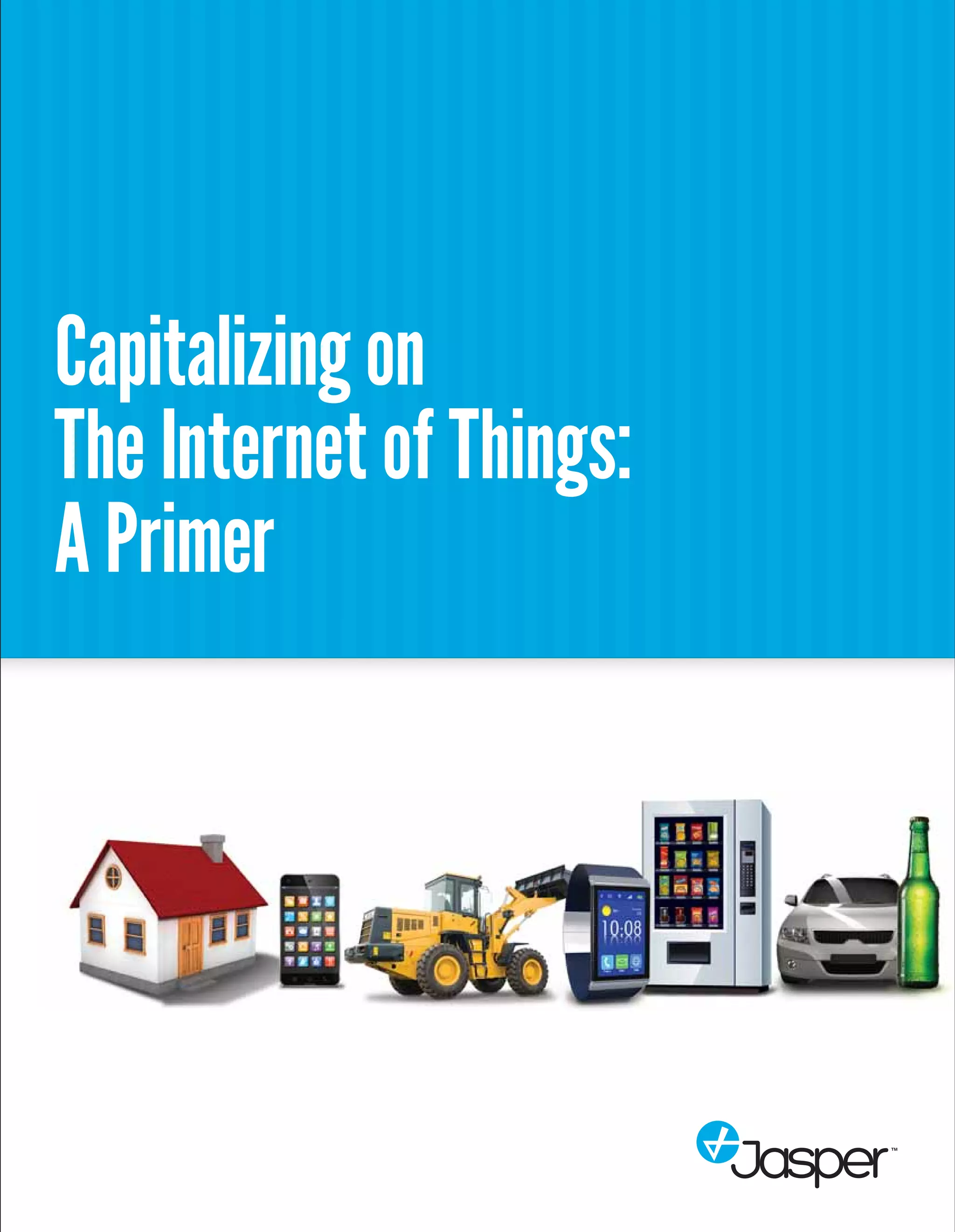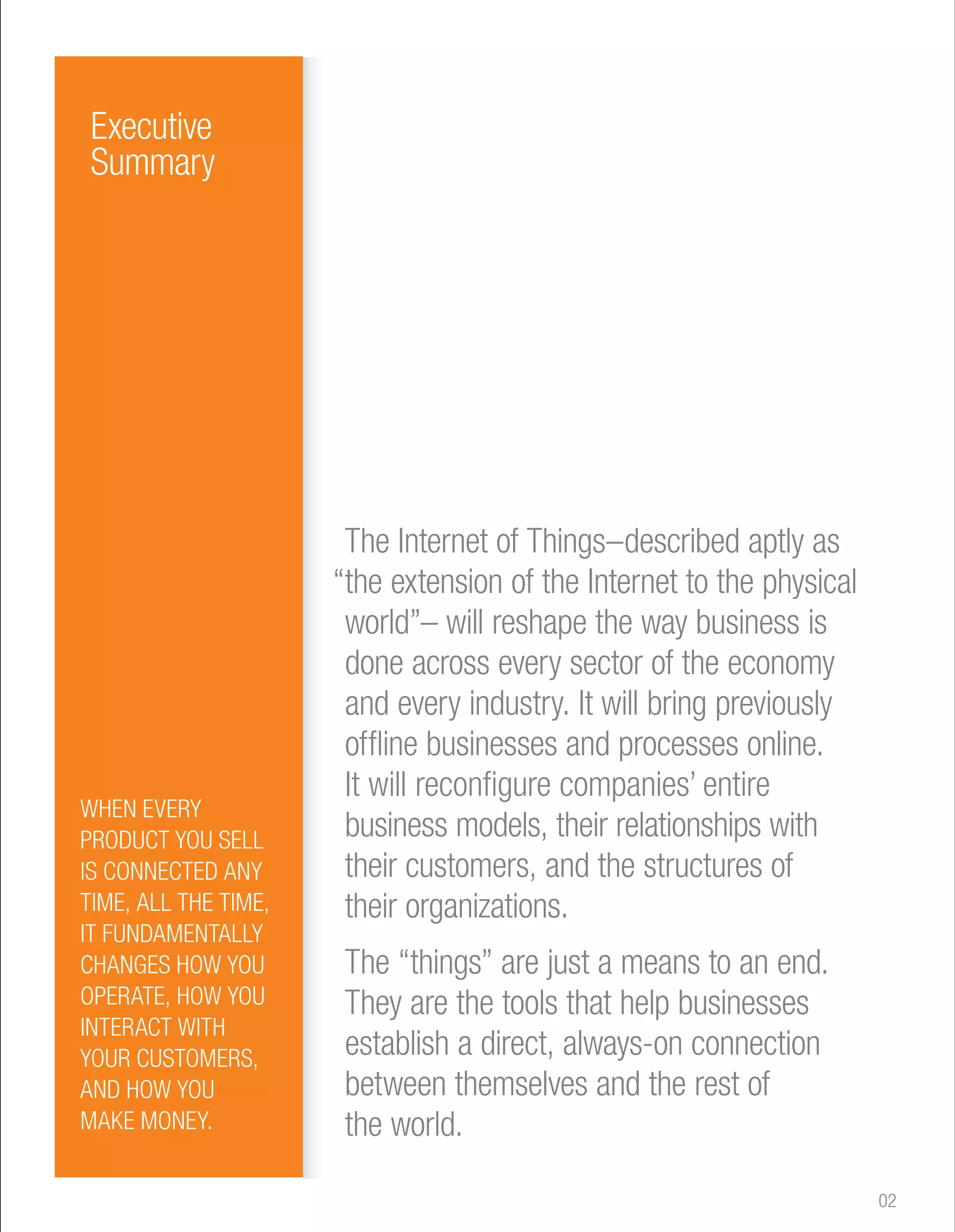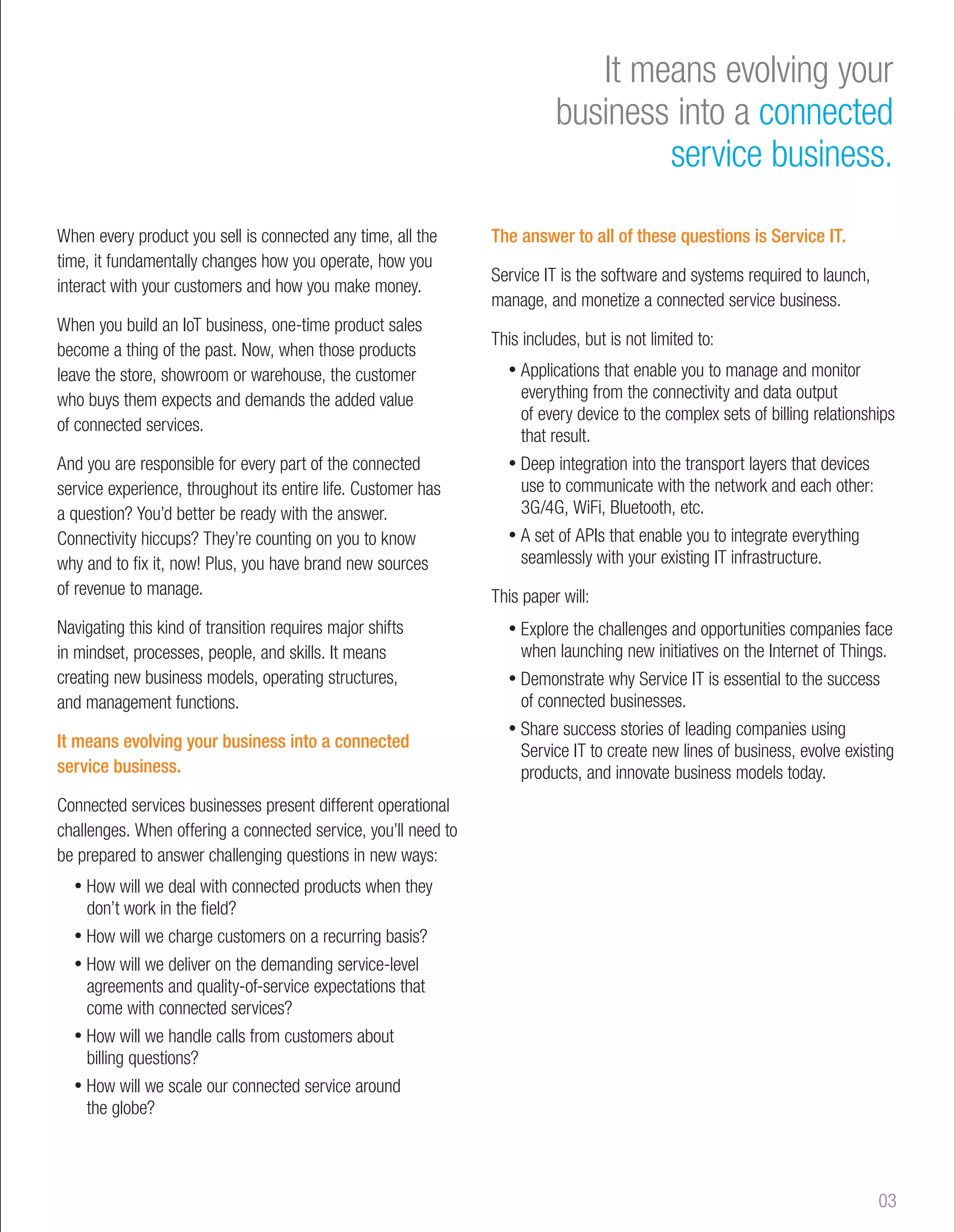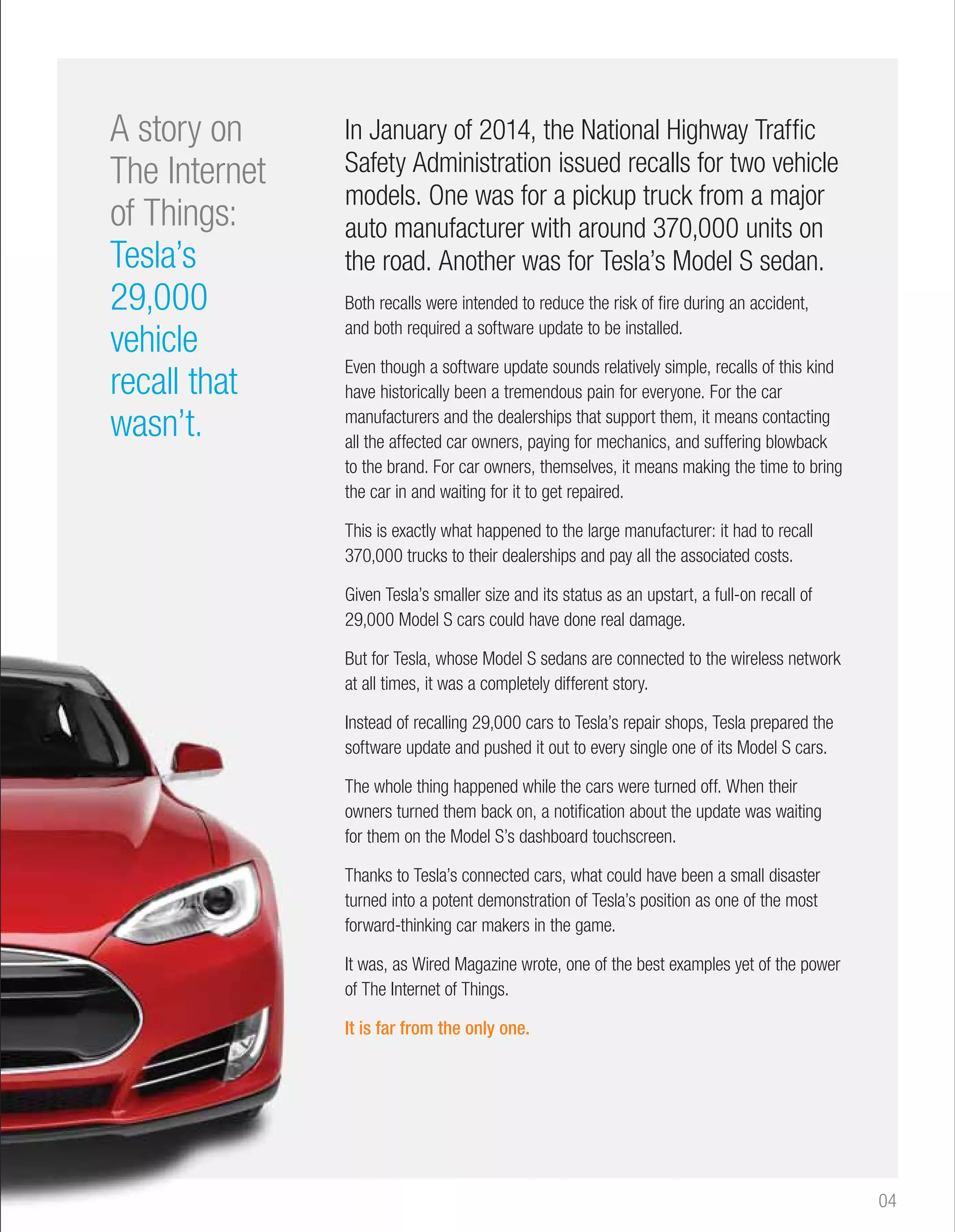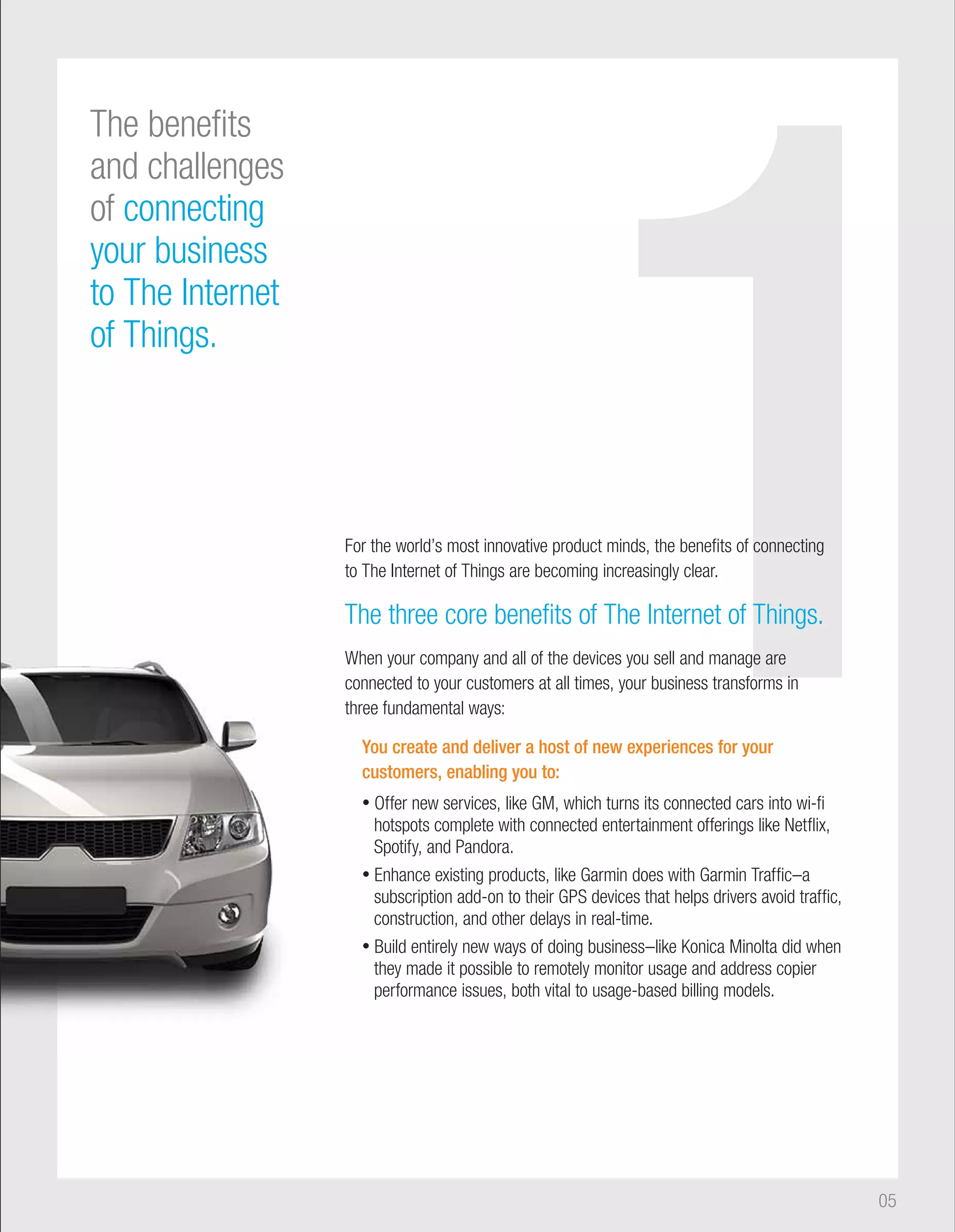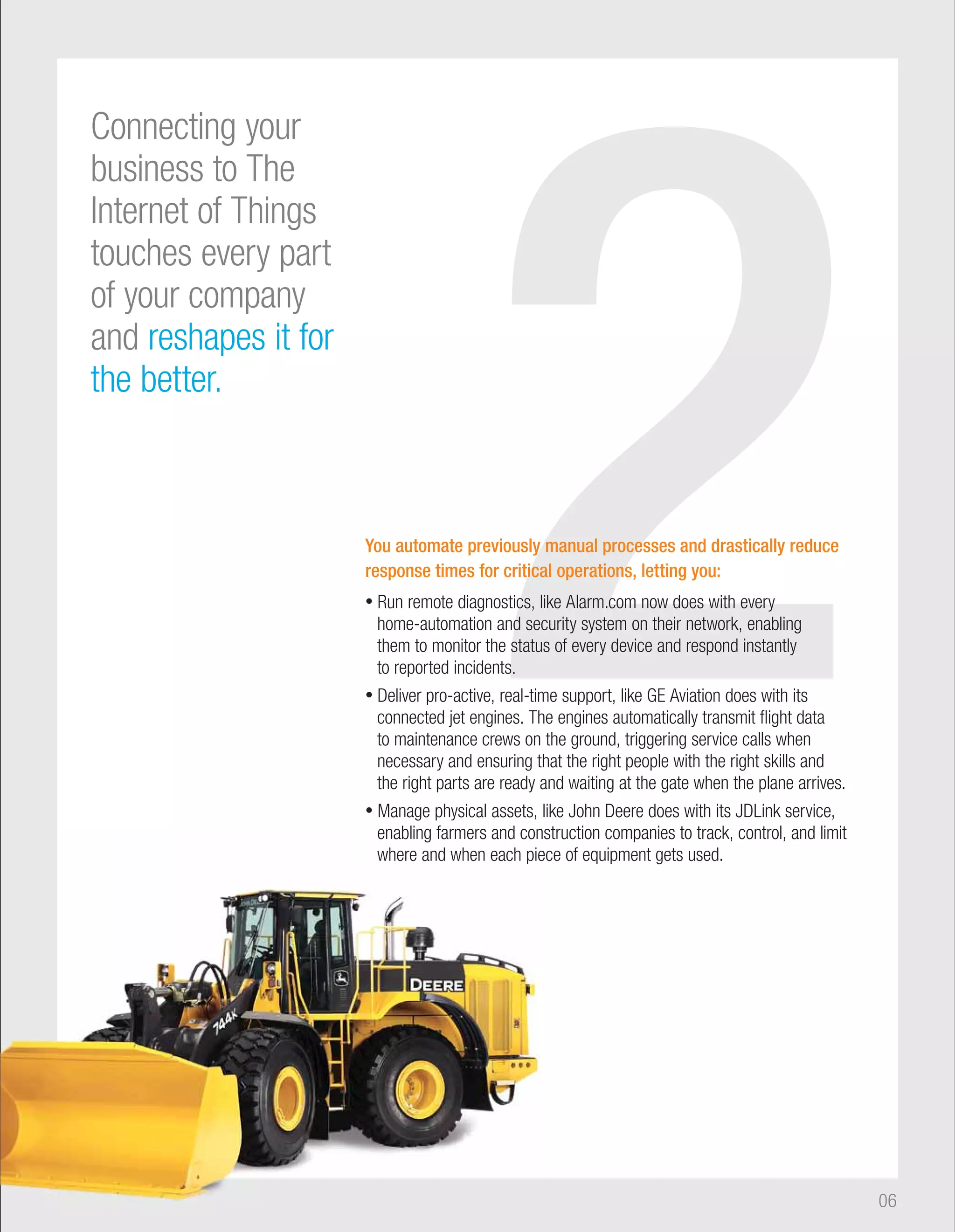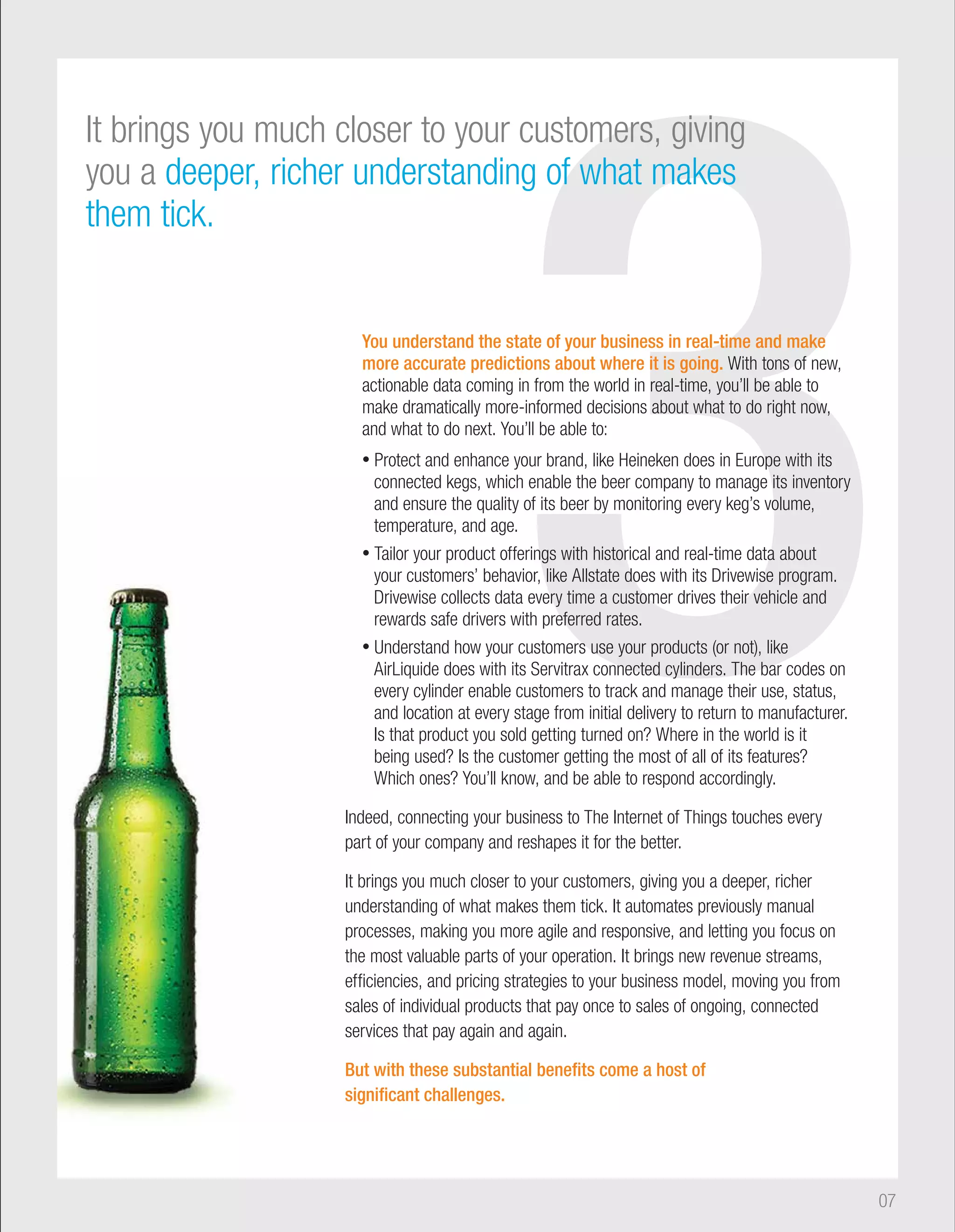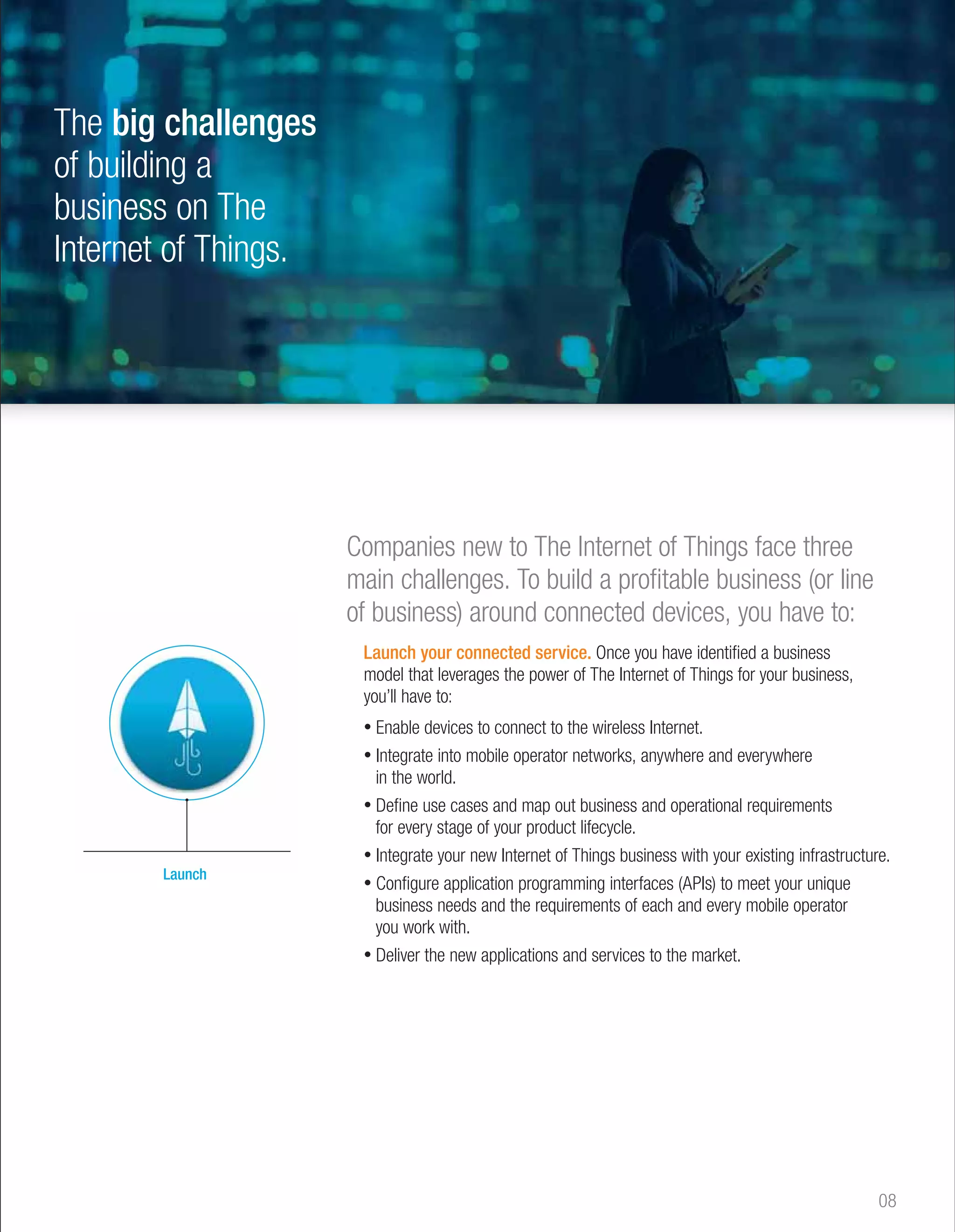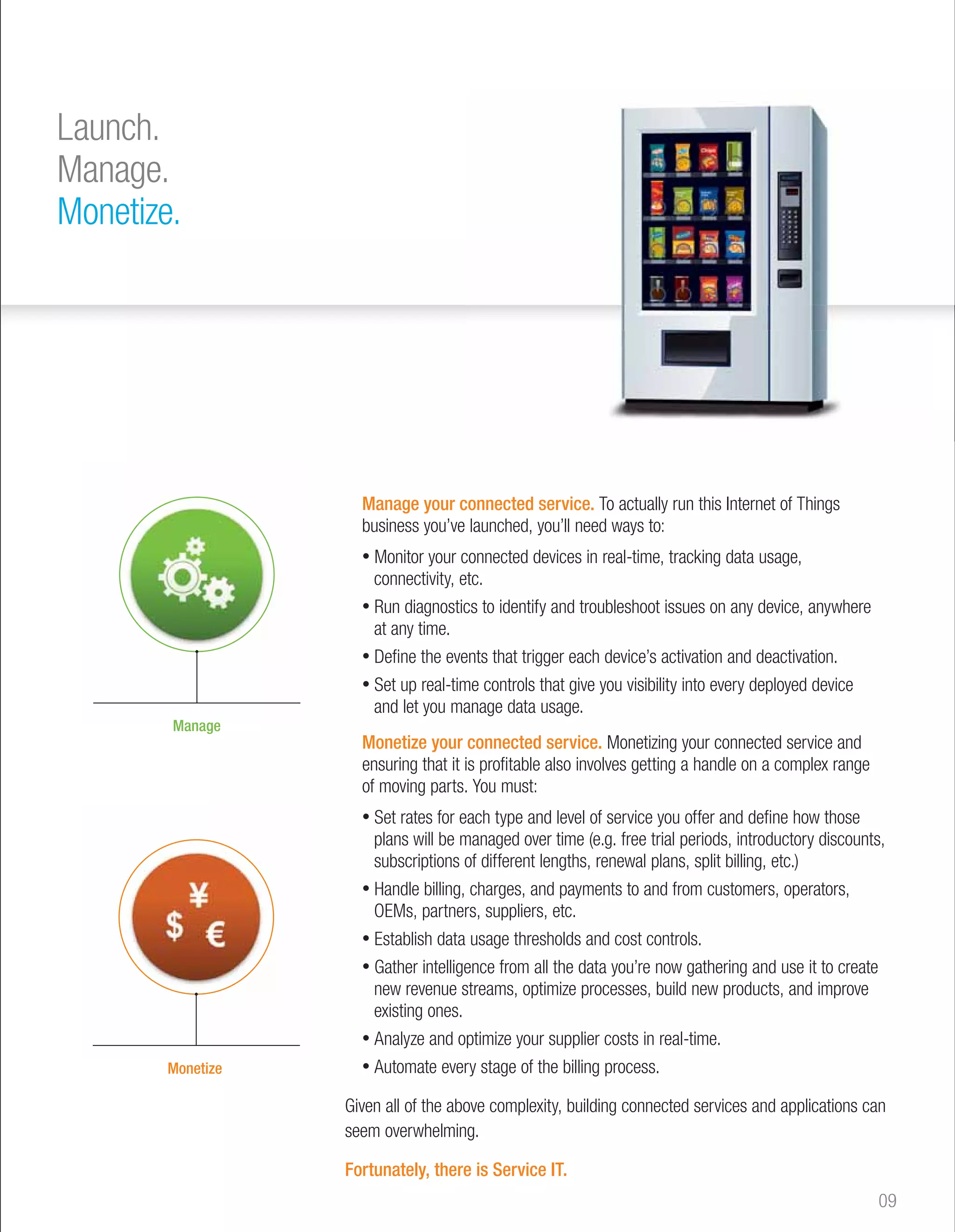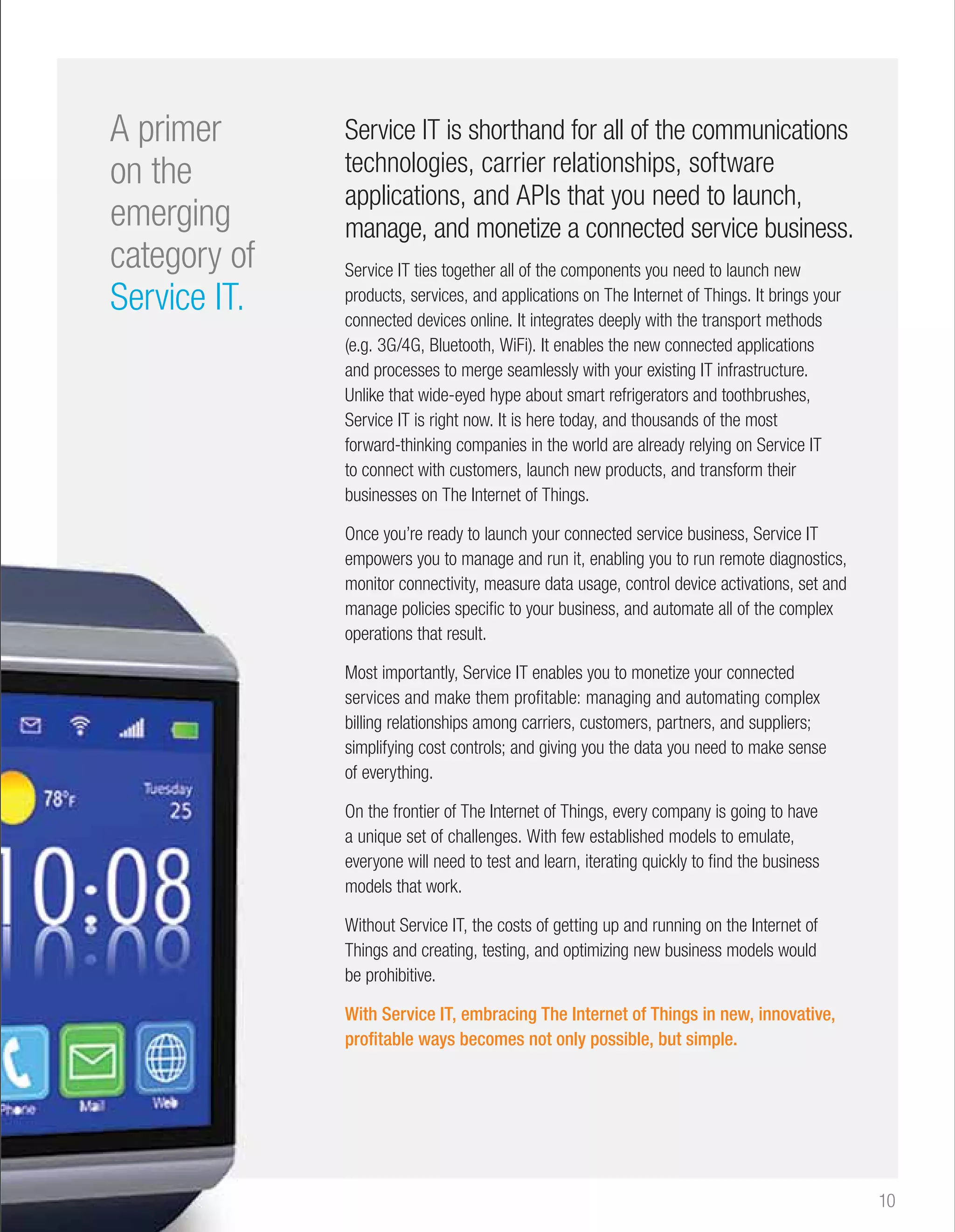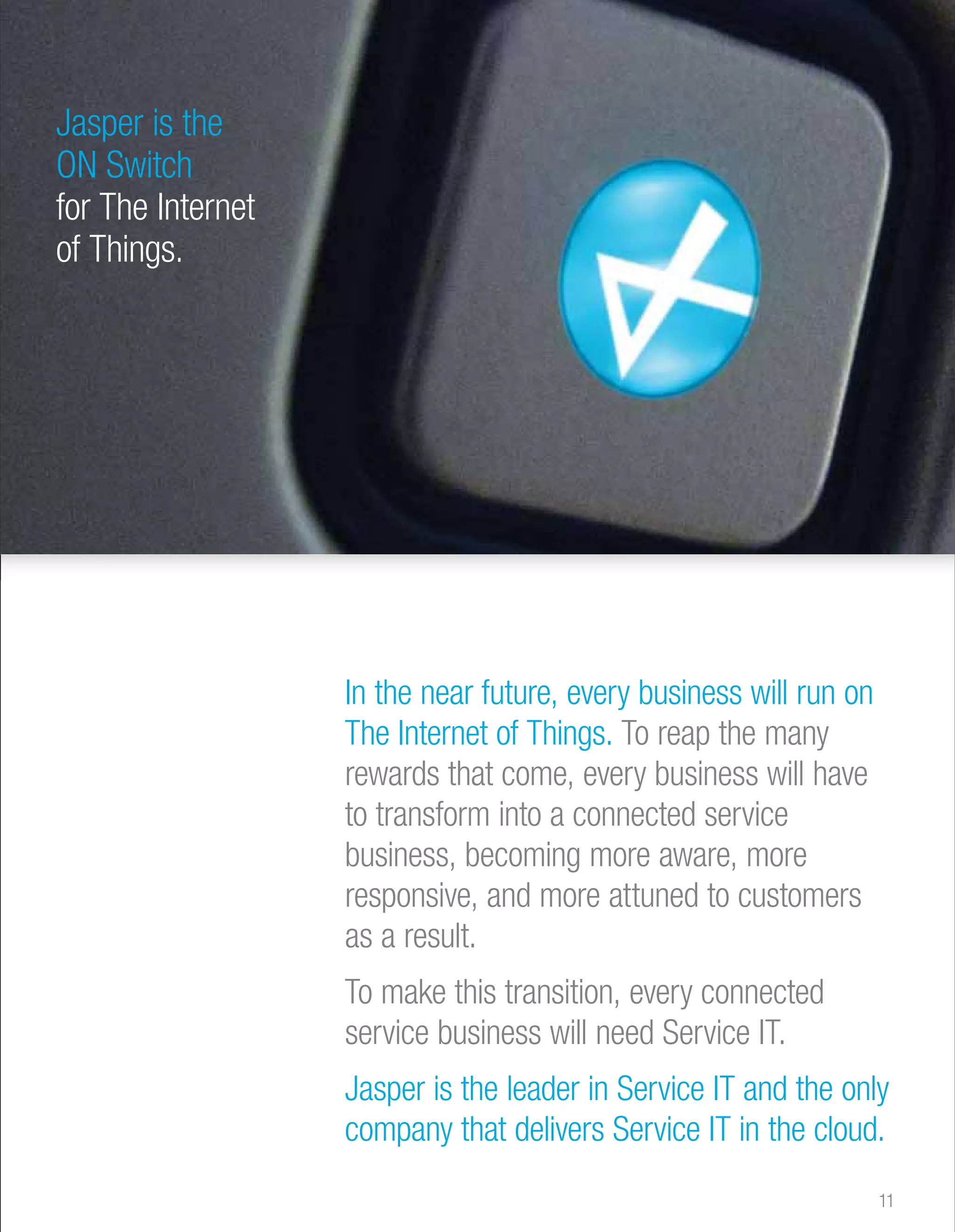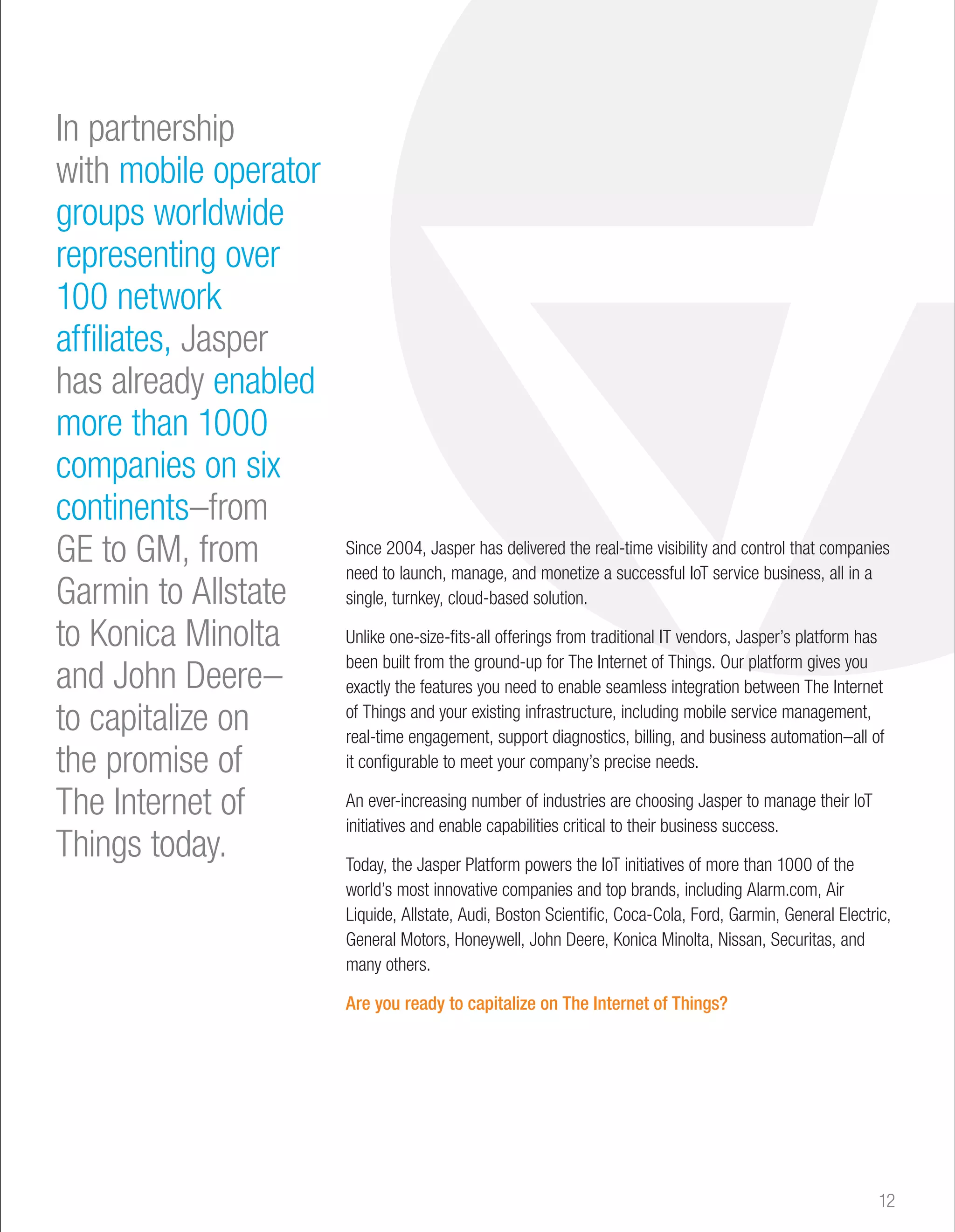The document discusses the opportunities and challenges presented by connecting products and businesses to the Internet of Things (IoT). It describes how the IoT will fundamentally change how businesses operate by allowing new customer experiences and services, automating processes, and providing real-time insights. A key benefit is illustrated through Tesla's ability to remotely update software in cars facing a recall instead of bringing them into shops. The challenges of building an IoT business are also addressed, including supporting new customer service expectations and managing connected products and services globally at scale.
